The Louis Daniel Brodsky Collection of Art Nouveau
February 22nd, 2015
|
Director of decorative arts Corbin Horn told us that other copies of “Divan Japonais” by Toulouse-Lautrec, 1892-93, have sold for far less, but the $30,000 result at this sale might have resulted from the tide of enthusiasm generated by surrounding lots. Hindman photo.
The Emile Gallé marquetry cabinet tied for the top lot at $35,000. In varied woods, the body has bird and floral motifs. Hindman photo.
Small though it may be at 50½" high, the Belgian wrought-iron and walnut music stand oozed Art Nouveau. No wonder it brought $8750 against a $1000/2000 estimate.
Estimated at $1500/2500, the French cameo glass and bronze table lamp, 25¾" high, soared to $23,750. The domed shade is etched “DeVez,” and the figural base is marked “Ch Korschann.” Hindman photo.
Besides starring on the catalog cover, the $23,750 French walnut pedestal table by Pierre Selmersheim (1869-1941) provided a new aspect of Art Nouveau. Viewers were fascinated by the four-part support and eight dished shelves. At 43" high x 31" wide, it is an imposing piece. Hindman photo.
Could this four-piece silver-plate German tea set designed by Paul Follot around 1902 be any more Art Nouveau? Here design goes a long way to explaining the $25,000 result. Hindman photo.
Alphonse Mucha cycle posters are iconic. No wonder this circa 1897 “Cycles Perfecta” color poster printed by F. Champenois brought $25,000. Hindman photo. |
Leslie Hindman Auctioneers, Chicago, Illinois
One message came through loud and clear from a Leslie Hindman single-owner sale on February 22. Featuring 347 lots of Art Nouveau, it broadcast that while fans of the style are considered a small cohort, they are extremely selective and focused.
Art Nouveau may not be a barnburner in today’s market, but when a remarkable collection assembled by Louis Daniel Brodsky of the St. Louis area came to sale after his death, buyers came out of the woodwork. The sale was a total sell-through, absolute, white glove, however you say it. To the walls.
Sale total, including buyers’ premiums, topped $1 million. The result more than doubled the presale estimates.
By the time of his death in 2014, Brodsky had lived many lives. A Yale honor graduate, he followed his passion by becoming a prolific and widely published poet in addition to managing a clothing factory and launching regional factory outlets.
The sale was a standout because each carefully selected lot was in top condition and because the preview and sale offered buyers a look at more good Art Nouveau in one place than most see in a lifetime. Plus, the focused single-owner sale offered goods relatively new to the market.
Assembled in only ten years, Brodsky’s collection came mainly from known sellers of Art Nouveau and was the best that he could buy.
“The beauty of these objects is that it all looks good together,” reflected Corbin Horn, Hindman’s director of furniture and decorative arts.
Put one or two pieces of Art Nouveau in a sale and they may do well but nothing spectacular. Stepping into an entire household of carefully selected, 100% top-grade design is another story.
We saw one viewer who upon entering and spotting an entire living room of period furniture and accessories said, “You guys need a defibrillator in here.”
Brodsky’s buys were from major names in the genre. Purchased primarily in Europe, New York, and Chicago, the collection encompassed furniture, ceramics, silver, glass, posters, prints, art glass, and some jewelry. Some came from his home territory in the Midwest.
Perhaps because it was such a new collection, provenance was easy to trace. Each lot description included where Brodsky bought the piece plus related references, exhibits, or museums. Sharp-eyed readers noted many entries listing the Colletti Gallery and Spencer Weisz Gallery in Chicago and Macklowe Gallery and other New York City galleries, major auction houses, sellers in London and Paris, plus several galleries and an antiques mall in Clayton near St. Louis where Brodsky lived.
After Hindman opened a St. Louis outpost in Clayton, Missouri, in the summer of 2014, the family approached her about selling.
Bridget Melloy, head of the St. Louis branch, recalls her first look at the collection. “It was like a museum,” she told us. “You rarely go into an estate and are immediately blown away. Our jaws just kind of dropped.”
That impact was replicated for viewers; walking into the assembly with lots placed as they were assembled by the owner was jaw dropping. Kudos to staffers Rebecca Williams, Mike Intihar, Will Krogman, and Andrew Tokarski for their masterful work in the setup.
According to Horn, dealers, many from New York City, led bidding. Yet collectors dominated the top buys.
Estimating the ratio of dealers to private buyers at 60% to 40%, he added that one New York area collector, apparently bidding for someone else, bought about ten major pieces of furniture, including a top lot (two items reached $35,000).
Unwilling to reach for retail prices, dealers dropped out when lots climbed. The highest-priced lots all went to collectors, and 60% of the winning bids came through absentee bids or in house. Only 19% came online. Surprisingly, few European collectors and/or dealers were buyers, though most major Art Nouveau artists and artisans came from the area.
A massive Spanish oak dining set sold for $18,750 to a buyer in the Midwest; a French oak bedroom set went to Texas for $3250. Four Mucha posters went to a collector in Tokyo where, as Horn put it, “The 1980s market for Art Nouveau posters is still hot.”
The top lot in posters, “Divan Japonais” by Henri de Toulouse-Lautrec, brought $30,000 from a Chicago-area collector.
Perhaps collectors were swept by the tide of enthusiasm. The more a lot captured the essence of Art Nouveau design, the higher it sold.
Collectors were certainly on fire. The dragonfly chandelier from Brodsky’s dining room that went to a midwestern collector for $27,500 was “everything you want from Art Nouveau,” said Horn.
It was “an absolutely stunning sale,” observed Melloy. “We were absolutely thrilled.”
For more information, go to (www.lesliehindman.com).
|
|
|
|
|
|
Originally published in the May 2015 issue of Maine Antique Digest. © 2015 Maine Antique Digest
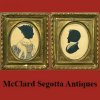


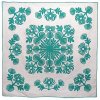

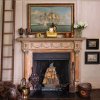



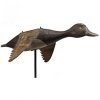


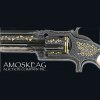




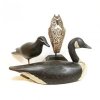





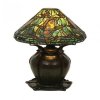
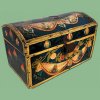
















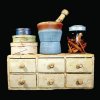


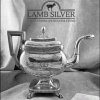







 Lot #2, an Emile Gallé enameled glass vase in two parts, more than doubled its high estimate to bring $10,625. At that point, attendees knew they were in for a special sale. Decoration on each side is a praying mantis on floral branches. Hindman photo.
Lot #2, an Emile Gallé enameled glass vase in two parts, more than doubled its high estimate to bring $10,625. At that point, attendees knew they were in for a special sale. Decoration on each side is a praying mantis on floral branches. Hindman photo. “The Winter Queen,” a jeweled and numbered Amphora pottery vase attributed to Nikolaus Kannhauser, sold for $17,500 (est. $3000/5000); it is 13½" high. Hindman photo.
“The Winter Queen,” a jeweled and numbered Amphora pottery vase attributed to Nikolaus Kannhauser, sold for $17,500 (est. $3000/5000); it is 13½" high. Hindman photo.
 The apotheosis of Art Nouveau design, this French chandelier hit all bases: dragonflies, gilt bronze in sinuous lines, art glass globes, slag glass, and more. Measuring 29" high x 27" diameter, it was a show-stopper, and it went to a midwestern buyer for $27,500. We’re told that it hung above Brodsky’s dining table.
The apotheosis of Art Nouveau design, this French chandelier hit all bases: dragonflies, gilt bronze in sinuous lines, art glass globes, slag glass, and more. Measuring 29" high x 27" diameter, it was a show-stopper, and it went to a midwestern buyer for $27,500. We’re told that it hung above Brodsky’s dining table.







